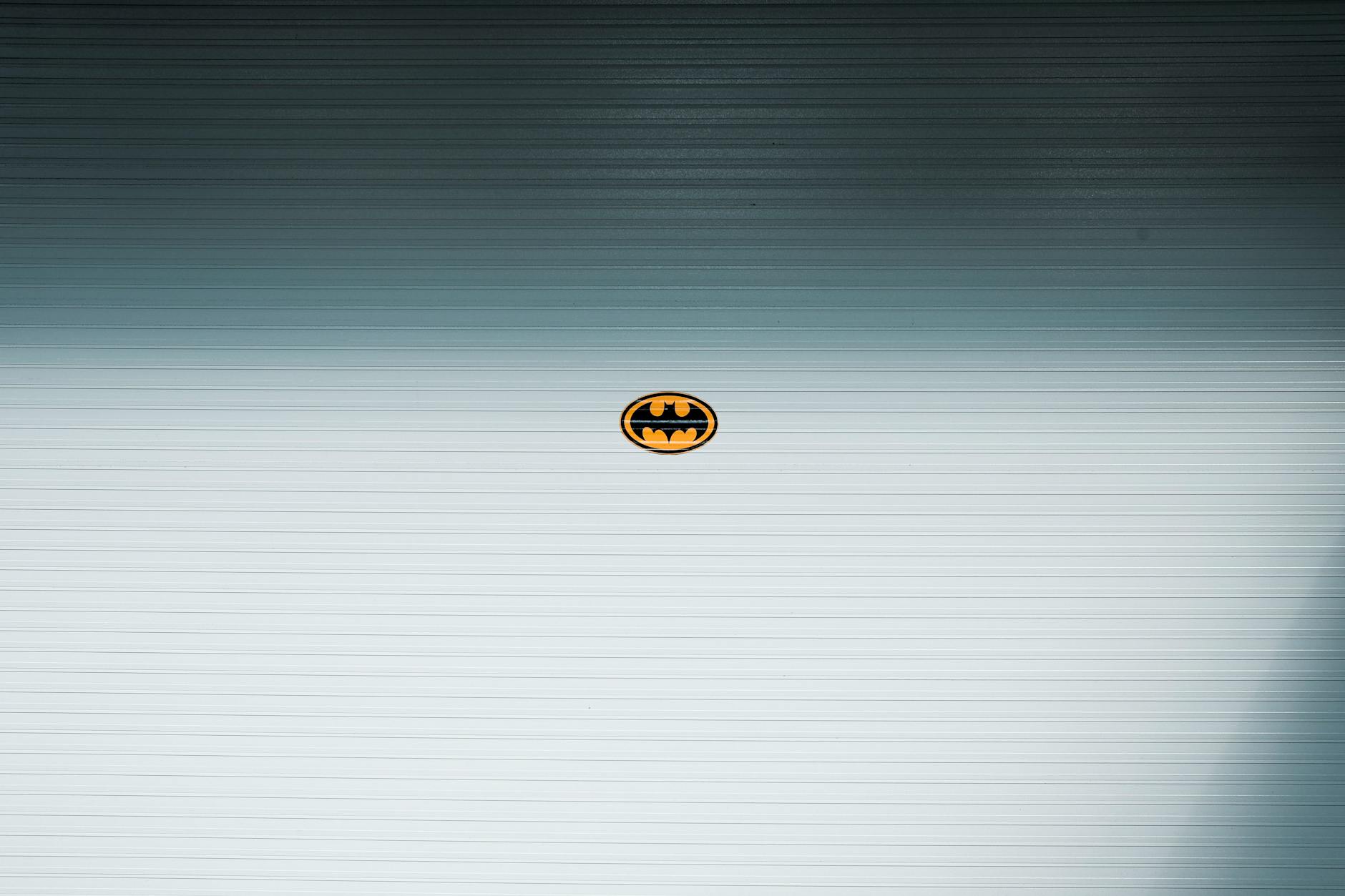Can you hear your garage door open from down the street? You might think you need to learn to live with it, but you don’t. Simple maintenance can fix that right up and save your (and your neighbor’s) ears from the protracted screech that occurs four times a day every day.
Caring for your garage door is part of home maintenance, and like all other chores, neglecting it too long could lead to damage that ultimately requires a premature replacement.

image source: Pexels
You can take care of lubricating your garage door in nine simple steps. Before getting started, read through your owner’s manual to learn how often your garage door requires maintenance and learn about any preferred products.
Buy The Right Lubricant

image source: Pexels
When a door in your house squeaks, you use your trust old can of WD-40. WD-40 is a degreaser, and degreasers aren’t a good idea for a garage door.
You’ll want either a lithium-based grease, a silicone spray, or a product designed for garage doors. Traditional WD-40 doesn’t work, but the brand does now offer professional and dedicated garage door lubricants suitable for the job because they include white lithium grease spray or other lubricants.
You’ll want a product that comes as a spray with a nozzle because you need to get into the garage door rollers to reach the ball bearings inside. Aerosol products also offer more control, which prevents you from over-spraying and throwing the door off balance.
Never use any type of oil. The oil will clog your garage door with dust and dirt and will drip out of the door, rendering it both ineffective and hard on your floors.
Close Your Door And Disconnect The Power

image source: Pexels
Before you do any maintenance, make sure the door is entirely closed and keep it that way by disconnecting the power source when it reaches the ground. If you can’t disconnect the two, flip the breaker in your circuit box that controls the power source.
Never do any work on your garage door with the power connected, or you could risk serious injury to yourself or anyone who happens to get in the way.
Put On Your Safety Gear
The combination of dust, debris, grease, and oil mean you shouldn’t get started without your safety gear.
Wear eye protection at a minimum. A good pair of goggles or glasses keep the dirt of your eyes as you remove it from the tracks. It is also critical when you are working on the overhead portions of the garage door. Even the right lubricant can cause some dripping and the last place you need it is in your eyes.
Gloves are also a good idea for protecting your hands from injury and the liquid-based lubricant.
Clean Your Garage Door Tracks
With your door closed and secure, you can now see and access the garage door tracks in their entirety.
The tracks guide the door’s rollers as your door moves up and down. Although these don’t require any lubricant, debris in the tracks causes friction, which negates the impact of lubricated rollers.
Get a rag and wipe down the inside of the tracks to remove big pieces of dirt, leaves or other debris. If you notice the build-up of dirt or grime, you can wash it away with brake cleaner. We recommend using the rag method, but if you can’t reach or are short on time, you can use the hose extension on your vacuum cleaner.
The hose of a vacuum cleaner works particularly well on the overhead portion of the tracks, particularly when you are uncomfortable on a ladder.
Pay careful attention to this aspect of the process. Leftover debris could get stuck on, which damages your tracks.
Start By Spraying Your Hinges
Now, you’re ready to start lubricating the moving components of your garage door. Get out the garage door lubricant of your choice—and remember not to use oil.
You’ll start by spraying the product on each one of the door’s hinges. To get into the hinges, you’ll need to move your garage door up manually. As you spray each, use one or two doses, just enough to cover them completely.
The hinges may not roll, but they do smooth out the process, which takes some of the stress off the motor and the rollers.
Apply The Lubricant To The Ball Bearings In The Rollers And Rail
Manually place the garage door back in the closed position and then add the lubricant to each of the rollers, making sure not to miss any.
If you’re unfamiliar, the rollers are the moving pieces attached to the hinges. They have a circular shape because they house ball bearings. Ball bearings of all types need to be lubricated to function the correct way.
To apply the lubricant to the ball bearings, you’ll spray the product inside of the rollers. Only add one spray, and if you find there’s extra, wipe it away. Too much lubricant on one or two can result in an unbalanced movement.
If you see any exposed ball bearings, lubricate it thoroughly.
Remember, your goal is to reach the ball bearings. You do not want to be spraying the product on the nylon rollers: it does your garage door little-to-no good.
The last critical part of the door you’ll lubricate is the top of the rail, which controls the chain. You’ll want to get on a ladder and add your product to the top of the mechanism. You don’t need to lubricate the bottom: it won’t make a difference. Once you add a coat, spread the product around with a rag to distribute it evenly
Finish With The Additional Springs, Bearing Plates, Lock, And Armbar
The bulk of your work is now complete, but there are still a few pieces left.
Start with the springs of your garage door. You’ll usually find these at the top of the door and accompanied by the bearing plates (circular parts on either side of the springs). Unless you’re well over six feet tall, you’ll likely need a stool or ladder to reach these parts as they sit at the very top of your garage door.
You’ll want to apply the product to the outside of the springs. When you take care of the bearing plates, add it near the center. Then, manually open and close the door to spread the grease around. (Don’t re-supply the power just yet.)
Note: lubricating your springs including your torsion spring is fine. However, you should not attempt to make any adjustments to it by yourself. Leave your torsion spring (and any red bolts) to a garage door technician.
Now, you’ll lubricate the lock. The lock doesn’t impact the movement of the door, but it does stop it from sticking and prevents the build-up of rust, which damages the door over time. Then, apply a good coat to the armbar (at the top of the door).
Check That Your Door Is Balanced
The final step in the process is checking the balance of your garage door. Missing a part or over-lubricating another can throw the balance off.
Open it manually and push it halfway up the rails. Take your hands away. A balanced door remains in place without your help. If it falls, it is unbalanced, and you need to have it serviced sooner rather than later.
Switch The Power Back On
With the work done, you can now reconnect the power and run your door as usual. You should notice an immediate difference, particularly if it has been several months since you last completed the chore.
Is Your Garage Door Still Noisy?
Did you finish the task only to find that your door still makes too much noise? The issue could be in your garage door track, and fixing it takes less than an hour.
To find the problem, you’ll move through all the (now well-lubricated) parts again. Use a deep socket and ratchet to tighten the hardware on both the door and track. Be wary of overtightening, which can cause even more damage.
Second, look out for worn-out hinges and rollers, particularly if you tend to be lax about maintenance. Some doors will self-destruct if not cleaned regularly. If your rollers are old and shaky, consider replacing them with new rollers, usually nylon rollers that include sealed-off ball bearings.
Your hinges should wear out only rarely, but they can make loud noises and cause strange movements.
Stop The Squeak

image source Freepik
Keeping your garage door clean and well-lubricated doesn’t just extend the life of the appliance. It also means you will no longer unceremoniously announce your arrival and departure to your entire neighborhood.
You can lubricate your garage door in only nine simple steps and doing so is a good opportunity to make sure all the parts are still in excellent working order. When in doubt, always check your owner’s manual.

